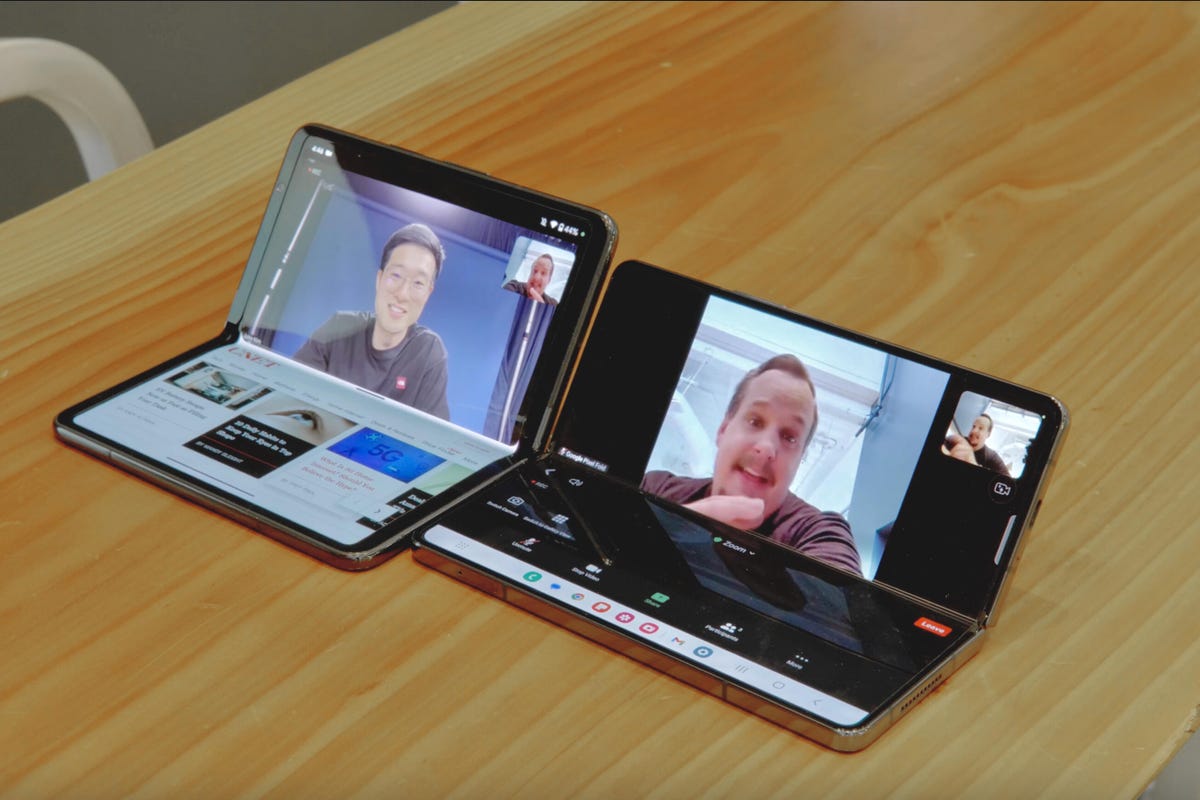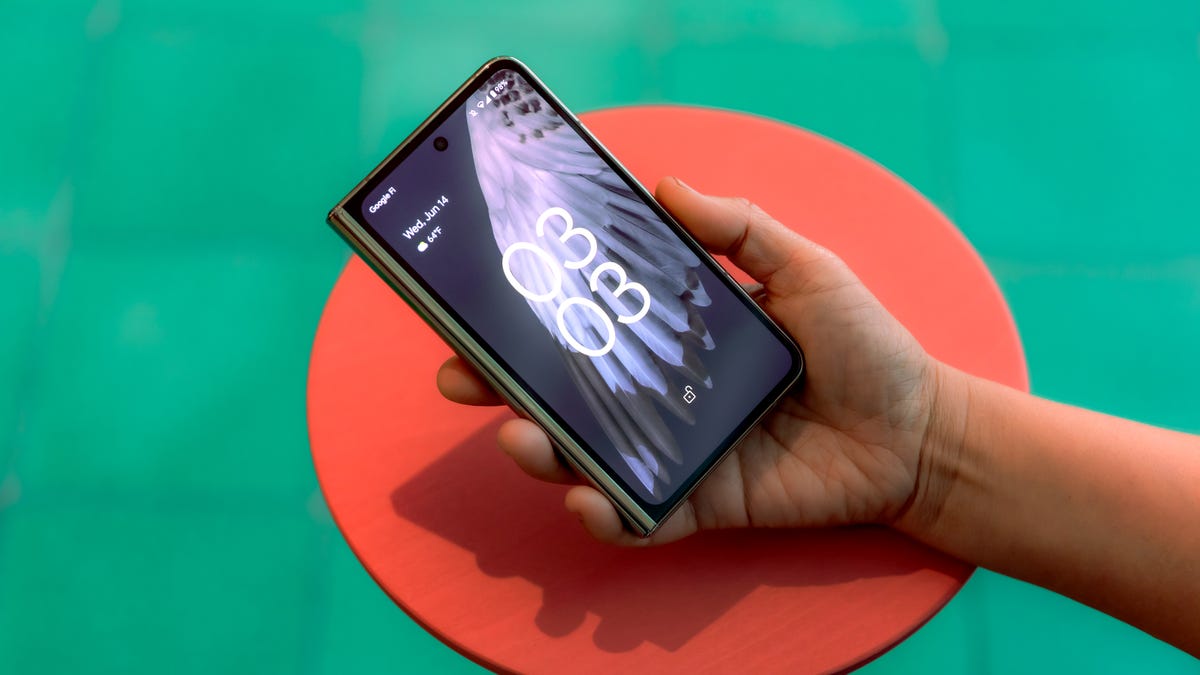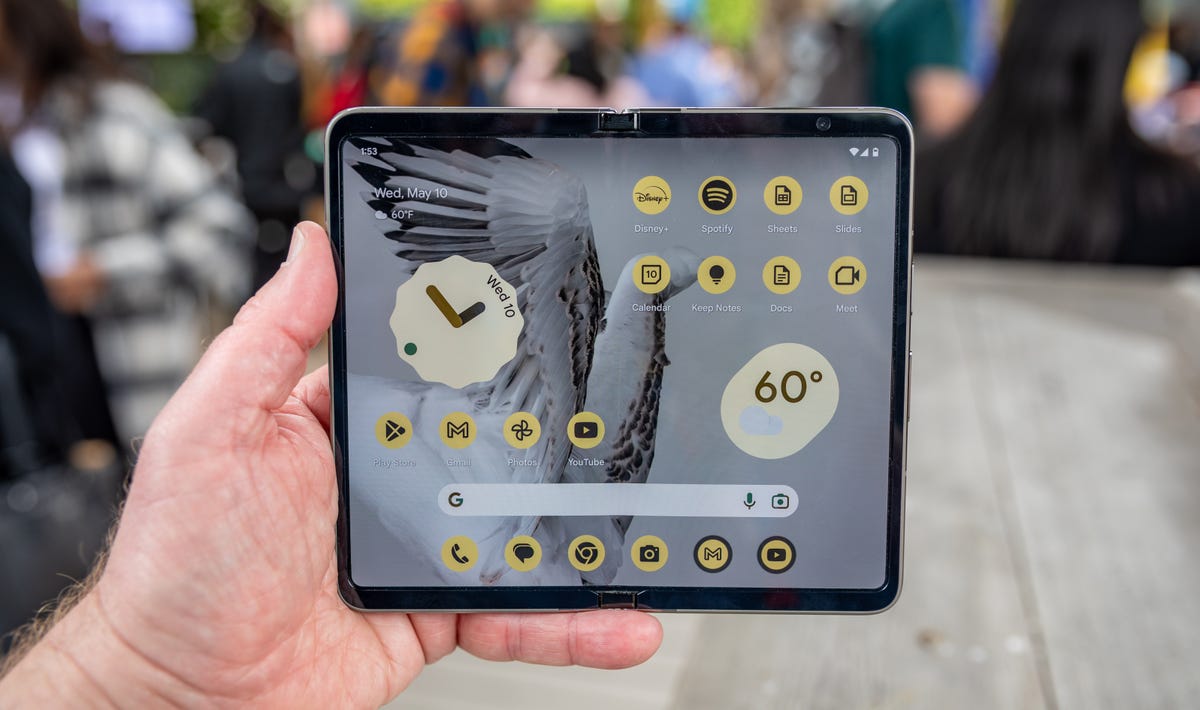Google got a lot right with the Pixel Fold, namely its spacious cover screen and high-quality rear camera system. But Samsung’s Galaxy Z Fold 6 just went on sale, and its sleeker design and a lighter build makes me want more from Google’s next foldable, the Pixel 9 Pro Fold.
The search giant will introduce the Pixel 9 Pro Fold at an event on Aug. 13, during which we’re expecting to learn more about Google’s smartphone plans. Above all else, I want Google to do what no foldable phone maker has done yet: Invent compelling new software features specifically for foldable phones.
I may sound like a broken record. But as the release of the Galaxy Z Fold 6 shows, phone makers still haven’t progressed much in terms of software that takes advantage of multiple screens. While the ability to prop open the device to take a photo or view apps in split screen mode is helpful, I want to see more creative ways to make use of the two screens you get with a foldable phone.
The Pixel 9 Pro Fold is expected to arrive just as the foldable phone market continues to grow, although it still represents a small portion of the overall phone market. In a report provided to CNET, the International Data Corporation stated that foldable shipments grew 33% year-over-year in the first quarter of 2024.
A new processor and some design tweaks are likely in store for Google’s next foldable, the latter of which Google has already confirmed through images posted on its website. But here’s what the Pixel 9 Pro Fold needs to keep pace with Samsung and address my biggest criticisms about the original Pixel Fold.
Read more: Galaxy Z Fold 6 vs. Z Fold 5: Testing Samsung’s New Ultrawide Camera Sensor
More innovative software features

The Pixel Fold (and other foldable phones) could use more creative software features.
If you’re going to pay top dollar for a foldable phone, you want an experience that feels notably different from that of a regular, bar-type phone. For some, the benefit of having both a tablet-sized internal screen and a phone-sized screen may check that box. But now that foldable phones have been widely available for around five years, I was hoping to see more from companies like Google when it comes to the software.
We’re still treating book-style foldables as if they’re just larger smartphones when there’s an opportunity for them to be a new type of device entirely. I recently wrote that Samsung should adopt a feature similar to Apple’s Standby mode for the Galaxy Z Fold 6’s cover screen, and I think Google should do the same.
In fact, it’s in an even better position to do so. Not only is the Pixel Fold’s front screen wider than the Galaxy Z Fold 6’s, but Google can draw from its experience with the Pixel Tablet to create a smart display-style interface for the cover screen.

I hope Google’s next foldable phone takes a page from the Pixel Tablet (pictured) for its cover screen.
There’s also room for Gemini to evolve on a device like the Pixel 9 Pro Fold. Given that Google is emphasizing Gemini’s multimodal capabilities — i.e. its ability to process various inputs such as speech, images, text and more — I’m curious to see whether that can be applied in interesting ways through Google’s foldable.
Unlike a traditional phone, a device like the Pixel Fold doesn’t need a separate kickstand or tripod to be propped up. That makes it easier to operate the camera and screen simultaneously without having to hold the device. I wonder what it could mean for Gemini in the future as Google leans more deeply into its multimodal nature.
Regardless, it would be nice to see a special version of Gemini tailored to the Pixel Fold’s dual screens. Google is already thinking about this; the Gemini overlay that appears when you summon the virtual assistant will soon be able to run in multiwindow mode on the Z Fold 6. It seems plausible that Google would bake the same functionality into its own foldable.
We’ll likely hear a lot about Gemini during Google’s Aug. 13 event, as implied by Google’s Gemini-heavy placeholder product page for the Pixel 9 Pro and Pixel 9 Pro Fold.
A thinner and lighter design

The Pixel Fold feels heavy compared to newer foldable phones.
Now that the Galaxy Z Fold 6 has arrived, it’s time for Google to step its game up in terms of design. At 283 grams, the Pixel Fold is notably heavier than the 239-gram Galaxy Z Fold 6, and it’s also a bit thicker than the Z Fold 6 when opened (5.8 millimeters versus 5.6mm). Honor and Xiaomi are even further ahead in this regard; the Honor Magic V3 is 226 grams, while the Xiaomi Mix Fold 4 is just 4.59mm when unfolded.
Size and weight may not be the most important elements of a phone, but making the Pixel 9 Pro Fold more compact would go a long way in making it feel less burdensome and more natural. The Galaxy Z Fold 6’s lighter design was the first thing I noticed about it upon picking it up, and I’m hoping that Google’s next foldable device will leave a similar impression. The Pixel Fold just feels clunky in comparison to the Galaxy Z Fold 6.
Design matters more for foldables than it does for regular phones. The thinner and lighter these devices get, the less they feel like two phones sandwiched together. Plus, their unconventional looks already attract attention, making their aesthetics all the more important. Based on Google’s images, it looks like the Pixel 9 Pro Fold will indeed get a makeover compared to its predecessor. However, it’s unclear whether the phone will be slimmer or lighter.
An improved inner screen

Google’s next foldable phone could use slimmer bezels and a less noticeable crease compared to the Pixel Fold (pictured).
The Pixel Fold’s interior screen could use an upgrade, particularly if Google wants to keep up with Samsung. As I wrote in my review, the bezels framing the Pixel Fold’s display are noticeably thick, which can make that tablet-sized screen feel less immersive. The crease is also noticeable on the Pixel Fold, especially alongside the Galaxy Z Fold 6 and OnePlus Open.
I’m skeptical that the crease will ever actually disappear from foldable phones in general, not just those made by Google. But the more discreet it is, the more it starts to feel like the phone-tablet hybrid it’s meant to be.
The images on Google’s website hint that the company has made some changes to the bezel framing the screen, but we’ll know more once Google announces the phone.
More years of software updates

Google increased its software update timeline with the Pixel 8 series. Let’s hope it does the same with the Pixel 9 Pro Fold.
The Pixel Fold will get new versions of Android until 2026, roughly three years following its launch. It’ll also receive security updates for five years from its launch.
However, Google raised the bar last year when it guaranteed seven years of Android updates for the Pixel 8 generation, so I’m hoping it continues that trend with its next foldable phone. A device as expensive as the $1,800 Pixel Fold should receive updates for longer than three years. (Its flexible display and body should last just as long, too.)
A lower price

The Galaxy Z Fold 6 (pictured) is $100 more expensive than last year’s Galaxy Z Fold 5. Hopefully Google doesn’t raise prices for its upcoming Pixel 9 Pro Fold.
There’s no sugarcoating it; foldable phones are expensive. That’s especially true for book-style foldable devices such as the Pixel Fold. Perhaps it’s unrealistic to think that Google could make all the improvements listed above while also reducing the Pixel 9 Pro Fold’s price. Still, the Pixel Fold’s $1,800 price is still noticeably higher than the average selling price for a smartphone in North America in the first quarter of 2023, which was $790 according to Canalys.
Samsung, meanwhile, just raised the price of the Galaxy Z Fold 6 by $100 compared to the Z Fold 5. If Google can continue to undercut Samsung on price while introducing improvements, the Pixel 9 Pro Fold could end up being the more enticing option.
We’ll know more about Google’s next foldable phone on August 13. But I’ve got my fingers crossed for a sleeker design, exciting software features and a lower price.




















+ There are no comments
Add yours